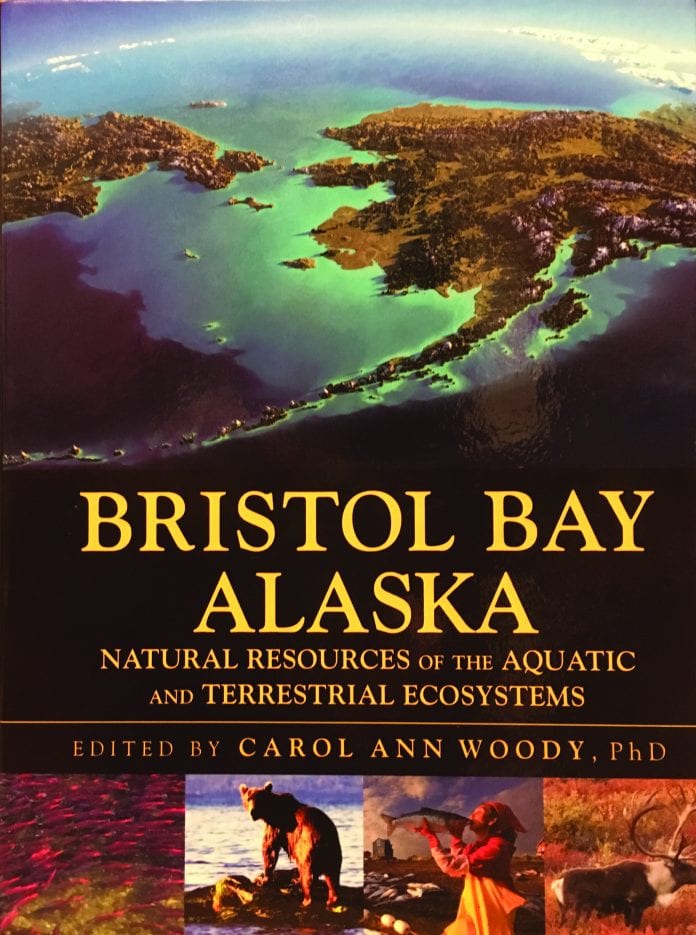Flying over the shoreline of Bristol Bay, fisheries biologist Carol Ann Woody watched sinuous red schools of salmon swimming along the gin clear beaches, swarming by the thousands at river mouths.
She thrilled to watch a rare population of freshwater Iliamna seals chasing salmon and basking on islands in the sand.
“As we flew to the small airstrip, passing over may free running rivers and streams, I realized I had arrived at the largest intact sockeye salmon ecosystem left in the world,” Woody wrote in an introduction of Bristol Bay Alaska Natural Resources of the Aquatic and Terrestrial Ecosystems.
Bristol Bay and its surrounding watershed remains one of the most pristine and ecologically significant places on Earth.
This new book, edited by Woody, is a scientific reference book focused on the diverse natural resources of some 44,000 square miles of Alaska that make up the Bristol Bay region. Sustaining the region’s renewable natural resources for generations to come is very important to the Bristol Bay Partnership, whose support made publication of the book possible.
Their hope is that policymakers, resource managers, scientists, students, visitors and businesses alike will read this book and want to know still more about the rich natural resources of the region.
What Woody has done as an editor is woven together in a very readable format a picture of the fabric of Bristol Bay, and the interdependence of the people, wildlife and ecosystems on each other.
While a great deal of scientific information of Bristol Bay’s natural resources is packed into government documents and scientific papers, this is the first definitive work on the region’s natural resources and their importance to the people, cultures and wildlife that call Bristol Bay home.
The book begins with a chapter by Alan D. Boraas and Catherine H. Knott of Kenai Peninsula College on the indigenous salmon cultures of the Bristol Bay watershed. And goes on to speak in detail about vegetation, flora, national parks, wildlife refuges, wildlife resources of the bay’s terrestrial and marine systems, freshwater ecology and fisheries and the non-renewable resources of Bristol Bay.
In a chapter on the importance of the region to marine birds of the world, Audubon’s Nils Warnock and Melanie Smith note that over the past 40 years, as ornithologists have begun to systematically survey birds in the region, a better understanding of this salmon-centered ecosystem has emerged and begun to elucidate the attraction of Bristol Bay to millions of shorebirds seabirds and waterfowl. They warn that climate warming, ocean acidification, loss of sea ice, sea level rise, increased Bering Sea shipping, overfishing, oil and gas development and large-scale mining all could have a dire impact on these marine birds.
The last chapter, written by Robert R. Seal of the U.S. Geological Survey implores that responsible decision making related to proposed mine development will require a balanced understanding of the pre-mining geologic, hydrologic and ecological landscape to understand environmental risks associated with mine development.















